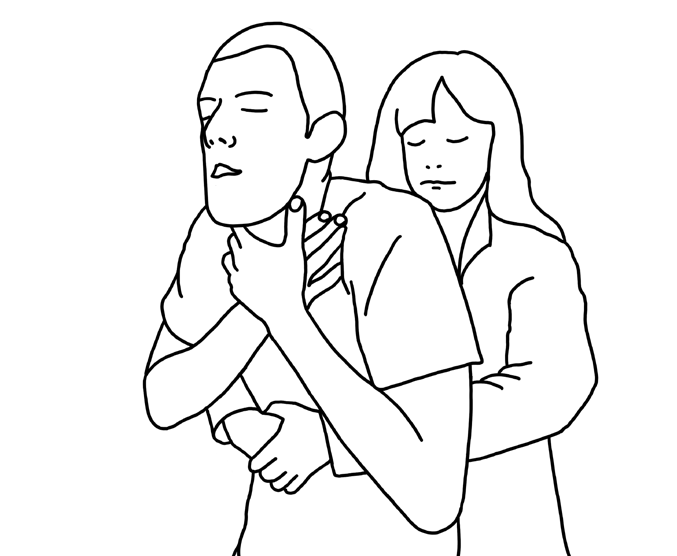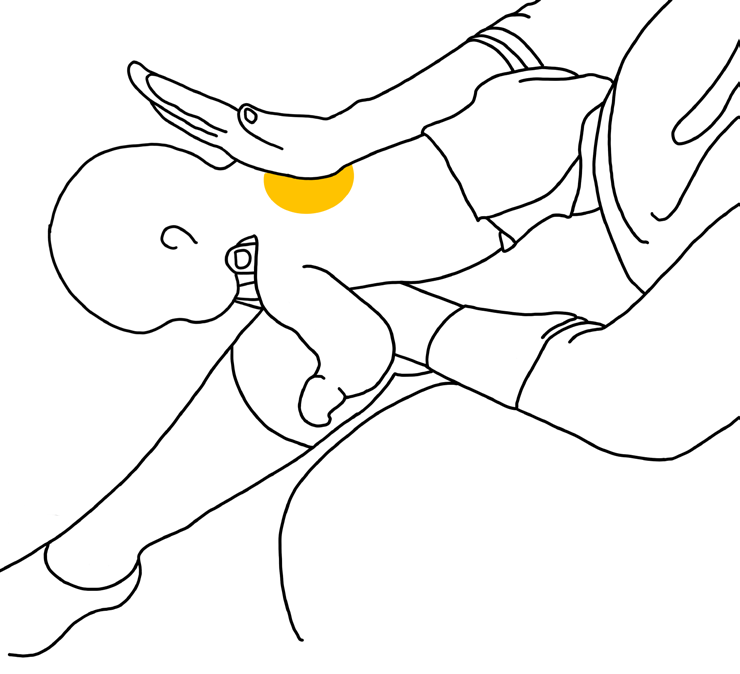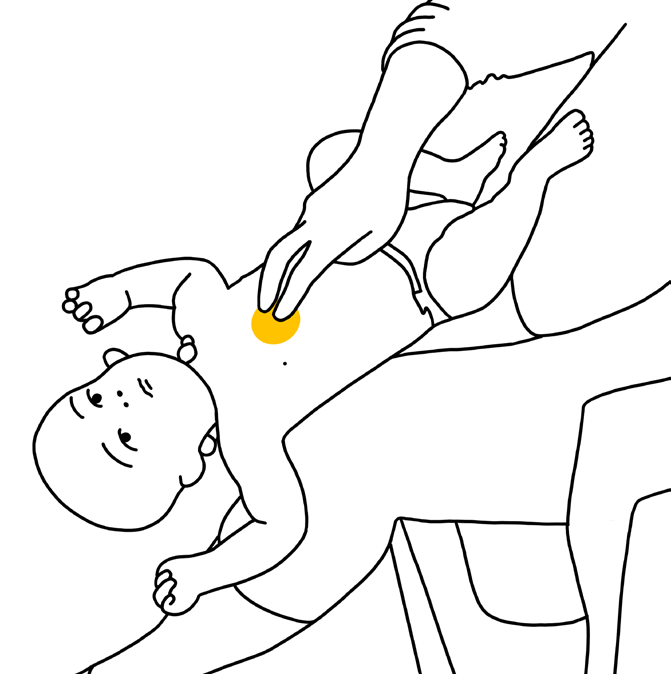SERIOUS EMERGENCIES
Call 911 immediately!
Call 911 immediately!




Choking in Adults and Children
- Give 5 back blows. Bend the person forward at the waist and give 5 back blows between the shoulder blades with the heel of one hand. (Diagram 5)
- Give 5 abdominal thrusts. (Diagram 6)
- Place a fist with the thumb side against the middle of the person’s abdomen, just above the belly button.
- Cover your fist with your other hand.
- Give 5 quick, upward abdominal thrusts.
- Continue sets of 5 back blows and 5 abdominal thrusts until the:
- Object is forced out.
- Person can cough forcefully or breathe.
- Person becomes unconscious.
- If the person becomes unconscious, call 911. Carefully lower the person to the ground and begin CPR, starting with compressions. (See CPR.)
Choking in Infants
- Give 5 back blows. Place the infant facing down. Give firm back blows with the heel of one hand between the infant’s shoulder blades. (Diagram 7)
- Give 5 chest thrusts. Place two or three fingers in the center of the infant’s chest just below the nipple line and compress the breastbone about 1½ inches. (Diagram 8)
- Continue sets of 5 back blows and 5 chest thrusts until the:
- Object is forced out.
- Infant can cough forcefully, cry, or breathe.
- Infant becomes unconscious.
- If the infant becomes unconscious, call 911. Carefully place the infant on a firm, flat surface, and begin CPR, starting with compressions. (See CPR.)
